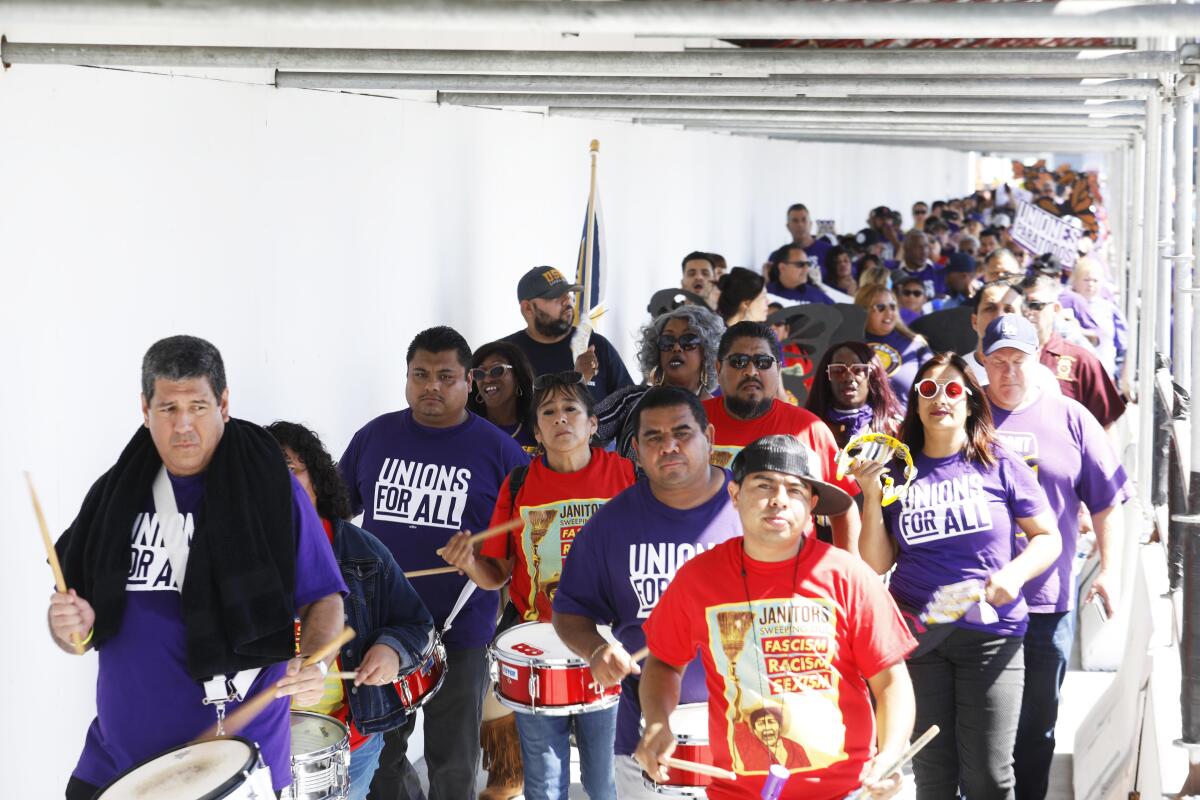For 53 million Americans stuck in low-wage jobs, the road out is hard

Unemployment is hovering near a five-decade low, workforce participation is at the highest level in six years and Federal Reserve Chairman Jerome H. Powell recently called the labor market “strong.”
Yet, 44% of Americans age 18 to 64 are low-wage workers with few prospects for improving their lot, according to a Brookings Institution report.
An estimated 53 million Americans are earning low wages, according to the study. That number is more than twice the number of people in the 10 most populous U.S. cities combined, the report notes.
The median wage for those workers is $10.22 an hour and their annual pay is $17,950.
Although many are benefiting from high demand for labor, the data indicated that not all new jobs are good, high-paying positions.
The definition of “low-wage” differs from place to place. The authors define low-wage workers as those who earn less than two-thirds of the median wage for full-time workers, adjusted for the regional cost of living.
For instance, a worker would be considered low wage in Beckley, W.Va., with earnings of $12.54 an hour or less, but in San Jose, Calif., the low wage bar rises to $20.02 an hour.
“We have the largest and longest expansion and job growth in modern history,” Marcela Escobari, coauthor of the report, said in a phone interview. That expansion “is showing up in very different ways to half of the worker population that finds itself unable to move.”
The millions of Americans in low-wage jobs are likely to stay there. Workers who make $10 to $15 an hour have a 52% chance of remaining in that wage bracket when they switch jobs.
For middle-wage workers, or those earning $19 to $24 an hour, there’s a 46% chance that a job transition would result in lower pay. That’s bad news for the nearly 3.5 million workers who quit their jobs in September alone.
The demographics of low-wage workers span race, gender and geography, but women and minority groups are more likely to earn low wages. Black workers are 32% more likely to earn low wages than whites, and Latinos are 41% more likely.
Nearly half of low-wage workers are concentrated in just 10 occupations, according to the report.
The largest group is retail salespeople (4.5 million), followed by information and records clerks (2.9 million), cooks and food preparation workers (2.6 million), building cleaners and janitors (2.5 million), material movers (2.5 million) and food and beverage servers (2.4 million).
Rounding out the top-10 list are construction trade workers (2.3 million), material dispatchers and distributors (1.9 million), motor vehicle operators (1.8 million) and personal care and service providers (1.8 million).
As for the future, the main concern is displacement, Escobari said.
“Both the industries that are growing and the industries that are shrinking are low wage,” and available work “is going to be more low-wage work,” she said.
Escobari and coauthors Ian Seyal and Michael Meaney suggest a variety of potential solutions to allow low-wage workers to avoid becoming trapped in those positions.
This would include efforts that match training to local and national industry needs rather than a one-size-fits-all approach.
“Policymakers can design reskilling programs that tap into local talent pools and facilitate workers’ realistic upward transitions into growing occupations,” the report said.
More to Read
Inside the business of entertainment
The Wide Shot brings you news, analysis and insights on everything from streaming wars to production — and what it all means for the future.
You may occasionally receive promotional content from the Los Angeles Times.










